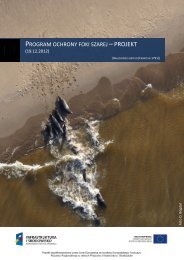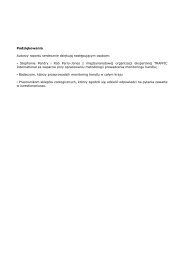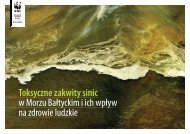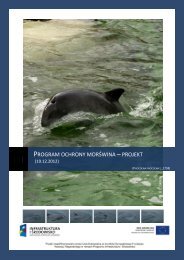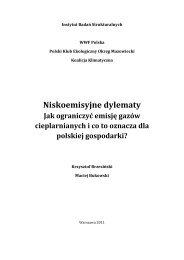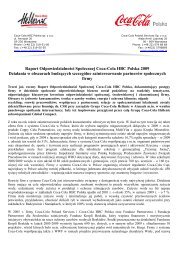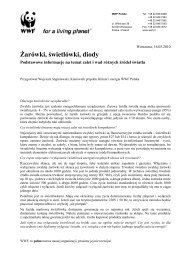COLLECTING GHOST NETS IN THE BALTIC SEA - WWF
COLLECTING GHOST NETS IN THE BALTIC SEA - WWF
COLLECTING GHOST NETS IN THE BALTIC SEA - WWF
You also want an ePaper? Increase the reach of your titles
YUMPU automatically turns print PDFs into web optimized ePapers that Google loves.
A regulation indirectly applicable to ghost nets is the<br />
latest Ordinance of the Minister of Economy of<br />
8 January 2013 on the criteria and procedures<br />
for permitting the disposal of waste at landfills for<br />
particular types of waste (with 3 appendices).<br />
4.3. Practical possibilities of<br />
collecting and storing fishing nets<br />
worn out through use or recovered<br />
from the sea<br />
Pursuant to applicable Polish regulations regarding<br />
property retrieved from the sea (including fishing<br />
gear), a vessel calling at a port should hand over<br />
such property to a representative of marine administration,<br />
i.e. the competent officer of the Port Master’s<br />
Office.<br />
The Maritime Offices having authority over the port<br />
to which property retrieved from the sea has been<br />
brought, are obliged to identify the owner of the<br />
property. Since nets are unmarked and it is impossible<br />
to identify their owner, after the period specified<br />
in regulations their ownership is transferred<br />
to the State Treasury, i.e. to the Maritime Offices,<br />
which collect the nets in separate containers or<br />
storage facilities, as described above. Periodically,<br />
once the storage facilities fill up, the nets are collected<br />
and transferred to landfills by specialized<br />
third party companies, at the cost of the Maritime<br />
Offices.<br />
because of their “clinginess”) and vessel owners<br />
have no motivation to deliver them to the port.<br />
The situation could be changed if legal solutions<br />
were introduced, encouraging fishermen (in the<br />
form of compensation) to deliver the retrieved nets<br />
to the port.<br />
The capacity for collection and storage of ghost<br />
nets in ports is virtually unlimited, since both Maritime<br />
Offices and Port Authorities can provide appropriate<br />
facilities for the reception and storage of<br />
ghost nets in the areas under their authority (as<br />
explained in the descriptions of the individual ports).<br />
What remains to be solved is the issue of collection<br />
and disposal of the nets (e.g. in pyrolysis or incineration<br />
plants).<br />
Maritime Offices and Port Authorities<br />
can provide appropriate facilities for the<br />
reception and storage of ghost nets<br />
in the areas under their authority.<br />
It should be emphasised that, in practice, if<br />
unmarked fishing gear is pulled up onto the deck<br />
e.g. of a fishing vessel using trawls, the gear is normally<br />
cut off and thrown back overboard. This happens<br />
because such ghost nets are inconvenient to<br />
store on vessels (and have to be placed in sacks<br />
A vessel calling at a port should<br />
hand over such property to a representative<br />
of marine administration, i.e. the competent<br />
officer of the Port Master’s Office.<br />
© <strong>WWF</strong> / P. Necel<br />
26 <strong>COLLECT<strong>IN</strong>G</strong> <strong>GHOST</strong> <strong>NETS</strong> <strong>IN</strong> <strong>THE</strong> <strong>BALTIC</strong> <strong>SEA</strong>



